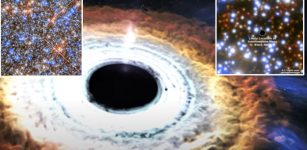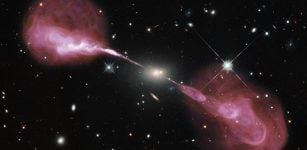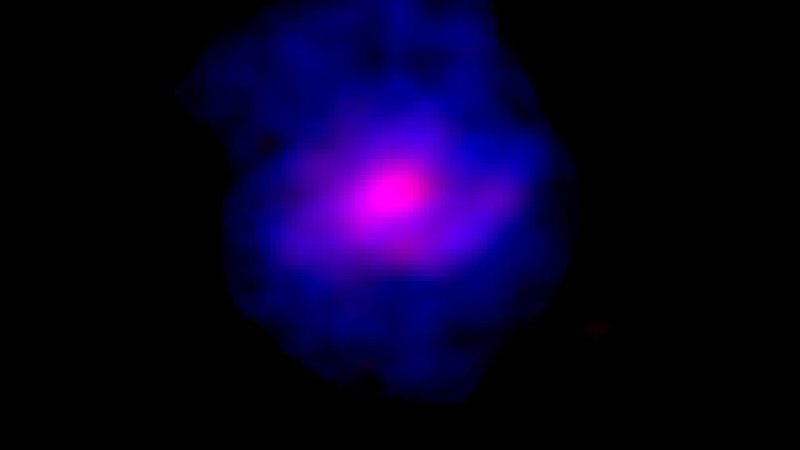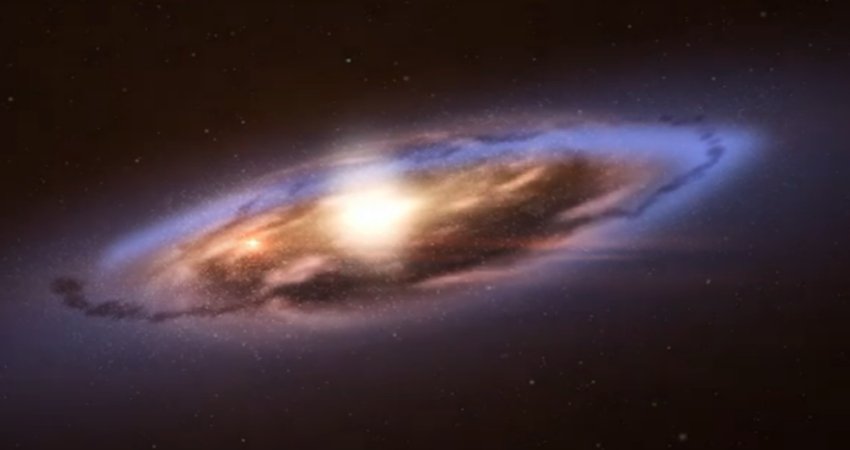Galaxy W2246-0526: Extremely Luminous Galaxy That Emits Infrared Light As 350 Trillion Suns
MessageToEagle.com – The most luminous galaxy in the universe has been observed stripping away almost half the mass from at least three of its smaller neighbors, according to astronomers who used new Atacama Large Millimeter/submillimeter Array (ALMA) in their research.
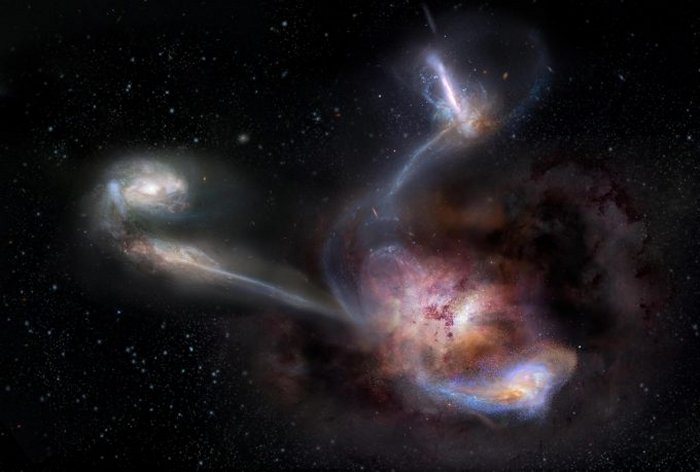
The light from this galaxy, known as W2246-0526, took 12.4 billion years to reach us, so we see it as it was when our universe was only a tenth of its present age. the largest or most enormous galaxy we know of, but it is unrivaled in its brightness, emitting as much infrared light as 350 trillion Suns.
The new observations with ALMA reveal distinct streamers of material being pulled from three smaller galaxies and flowing into the more massive galaxy, which was discovered in 2015 by NASA’s space-based Wide-field Infrared Survey Explorer (WISE).
“We knew from previous data that there were three companion galaxies, but there was no evidence of interactions between these neighbors and the central source,” said Tanio Diaz-Santos of the Universidad Diego Portales in Santiago, Chile, lead author of the stud, said in a press release.
“We weren’t looking for cannibalistic behavior and weren’t expecting it, but this deep dive with the ALMA observatory makes it very clear.”
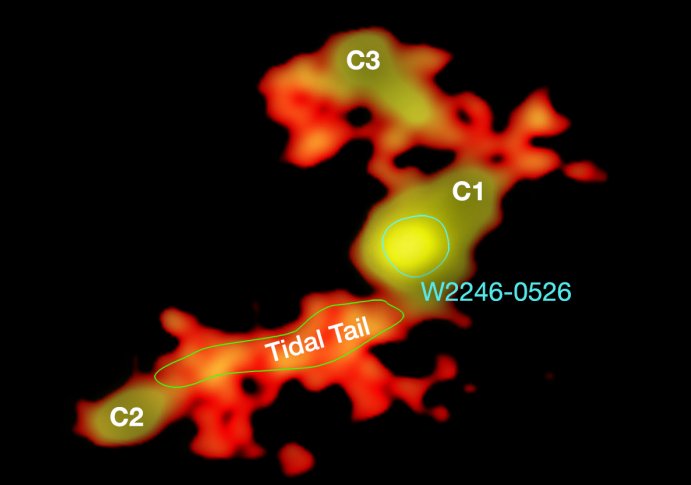
The researchers emphasize that the amount of gas being devoured by W2246-0526 is enough to keep it forming stars and feeding its central black hole for hundreds of millions of years.
This galaxy’s startling luminosity is because its brightness is powered by a tiny, yet fantastically energetic disk of gas that is being superheated as it spirals in on the supermassive black hole. The light from this blazingly bright accretion disk is then absorbed by the surrounding dust, which re-emits the energy as infrared light.
The material from the accretion disks falls onto the black hole powering the Active Galactic Nuclei (AGN), making this galaxy one of a rare class of quasars known as Hot, Dust-Obscured Galaxies (Hot DOGs). Only about one out of every 3,000 quasars observed by WISE belongs to this class.
Much of the dust and gas being siphoned away from the three smaller galaxies is likely being converted into new stars and feeding the more massive galaxy’s central black hole. This galaxy’s gluttony, however, may lead to self-destruction.
MessageToEagle.com

